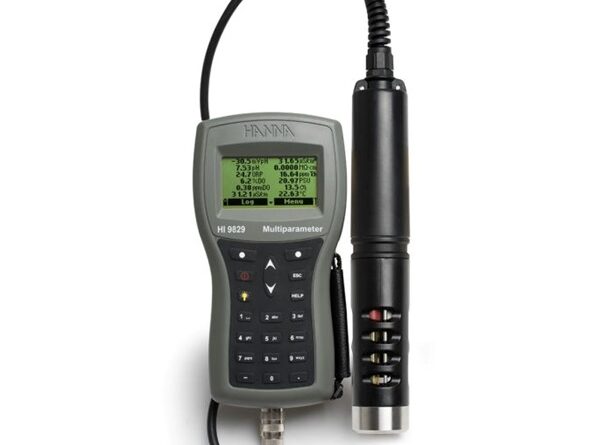What are Multiparameter?
Introduction
Any medical practice requires constant monitoring. It involves tracking several factors throughout time, including the progression of illness and conditions. Health indicators are often regularly monitored with a medical monitor. Monitoring may be divided into several categories depending on the goal of interest. The different monitors used in emergency rooms depend on the unit itself, the kind of unit, the needs of the patient, as well as other elements like price and manufacturer preference. The patient will at least need to have a monitor beside their bed that, above other things, can record waveforms from a pulmonary artery catheter, arterial line, cardiovascular system, and breathing rate. Additional bedside devices are possible for monitors that keep tabs on temperature and brain waves. Additionally, there are devices that monitor heat, nutrition, and a variety of different unit-specific factors.
It would be helpful to explain what a patient monitoring system is prior to diving into the various types of patient monitoring systems. The term “patient monitoring system” refers to any collection of tools and/or techniques used by healthcare professionals to track important biological indicators.
Although there are many different kinds of patient monitoring systems (such as wireless, portable, real-time, continuous, etc.), they are frequently separated into two main groups: bedside patient monitoring systems and remote patient monitoring systems.
- Bedside patient monitoring systems (sometimes called “hospital patient monitoring systems”) are used to monitor patients inside a hospital or doctor’s office. Several wires, sensors, and displays in the traditional bedside patient monitoring system surround a hospital patient’s bed. With the use of these monitors, a patient may be watched over continually, and the medical team is kept up to speed on any changes to the numbers. Additionally, it includes of communication channels for recording or showing the outcomes. Mechanical and biological sensors are common types of sensors. Transforming sensor signals into a format that can be seen on an external display or recorded by a device is the job of translating components.
- System for Remote Patient Monitoring – Contrary bedside patient monitoring systems, remote patient monitoring systems (also referred to as “home patient monitoring systems”) serve to monitor those who are not hospitalised.
What are Multiparameter?
Multi-parameter patient monitors (MPMs) have grown increasingly important for patients to get high-quality healthcare. In a healthy individual, there is an inherent relationship between various vital signs, which is widely known in the medical community. Multi-parameter patient monitors (MPMs) are often used in intensive care units (ICUs) and general wards to continually track patients’ health based on their pulse, arterial pressure, breathing rate, and saturation level of oxygen (SPO2) levels. The most common usage for them is as bedside monitors.
Multipara displays may basically be divided into three categories:
- A three-parameter patient monitor displays three essential parameters: temperature, SPo2, and Non-Invasive Blood Pressure (NIBP).
- A five-parameter patient monitor displays parameters for the respiration rate, temperature, SPO2, NIBP, and ECG.
- 7-parameter patient monitors that show ECG, NIBP, SPO2, breathing rate, temperature, end-tidal CO2, and intrusive blood pressure.
It’s worth mentioning that multi-parameter sensor may be used in the following two particular sectors of application:
A). Foetal and maternal monitoring: Pregnant women and their unborn children’s vital signs are both tracked using foetal and maternal monitors. These instruments monitor uterine and foetus activity as well as the heart rate of the foetus. Among the advanced maternal monitoring features are temperatures, saturation of oxygen, ECG, and non-invasive blood pressure measurement. In particular during labour, they provide extensive visualisation with a colour screen and a secondary screen. There are various monitors that have a post-partum mode.
B). Monitoring while under anaesthesia: These monitors may be used in conjunction with an anaesthetic gas analyzer to track anaesthesia. They provide vital indicators as well as details on the gases injected throughout a procedure.
What are the Mechanisms of Sensors?
The monitor gets its information from tiny sensors that are affixed to your body. Some sensors are patched onto your skin, while others are affixed to a finger. Even simple gadgets show your body temperature, blood pressure, and heartbeat. Advanced simulations may also demonstrate the rate of breathing or the amount of oxygen carried by your blood. Some of them can even show you how much pressure is on your head or how much carbon dioxide you’re inhaling. The monitor will make specific noises if any of your key indicators drop below acceptable levels.
What Do the Values Mean?
- Blood pressure is an indicator of how much force is exerted on your arteries both while your heart is pumping (systolic pressure) and when it is at rest (diastolic pressure). Systolic pressure should be in the range of 100 to 130, while diastolic pressure should be in the range of 60 to 80.
- Temperature: The normal body temperature is 98.6 degrees Fahrenheit, however it may fluctuate safely between 97- and 99-degrees Fahrenheit without raising any red flags.
- Adults who are at rest normally breathe 12 to 16 times each minute.
- Oxygen saturation: This test gauges how much oxygen is present in your blood on an index of one to one hundred. Anything below 90 shows that your body is not receiving enough oxygen, and the score should be 95 or above.
Parameters That Are Most Often Monitored
- Continuous electrocardiography is usually a part of cardiac monitoring. In relation to their heart rhythm, the patient’s condition is evaluated.
- Hemodynamic monitoring: In this sort of monitoring, the blood pressure and blood flow within the circulatory system are tracked.
- Monitoring of the respiratory system with pulse oximetry also involves determining the blood’s oxygen saturation level. CO2 concentrations may also be measured through respiratory monitoring. The AWRR (Airway Respiratory Rate) may also be monitored in addition to that.
- Monitoring of the nervous system, or neurology, comprises, among other things, the monitoring of intracranial pressure and brain EEG.
- Monitoring blood glucose levels is another critical parameter to monitor in patients.
- Monitoring your body temperature may be crucial under certain circumstances.
As mentioned above, the bulk of the metrics must be kept within acceptable limits to monitor critical components; anything outside of that need medical care, sometimes even emergency attention.



